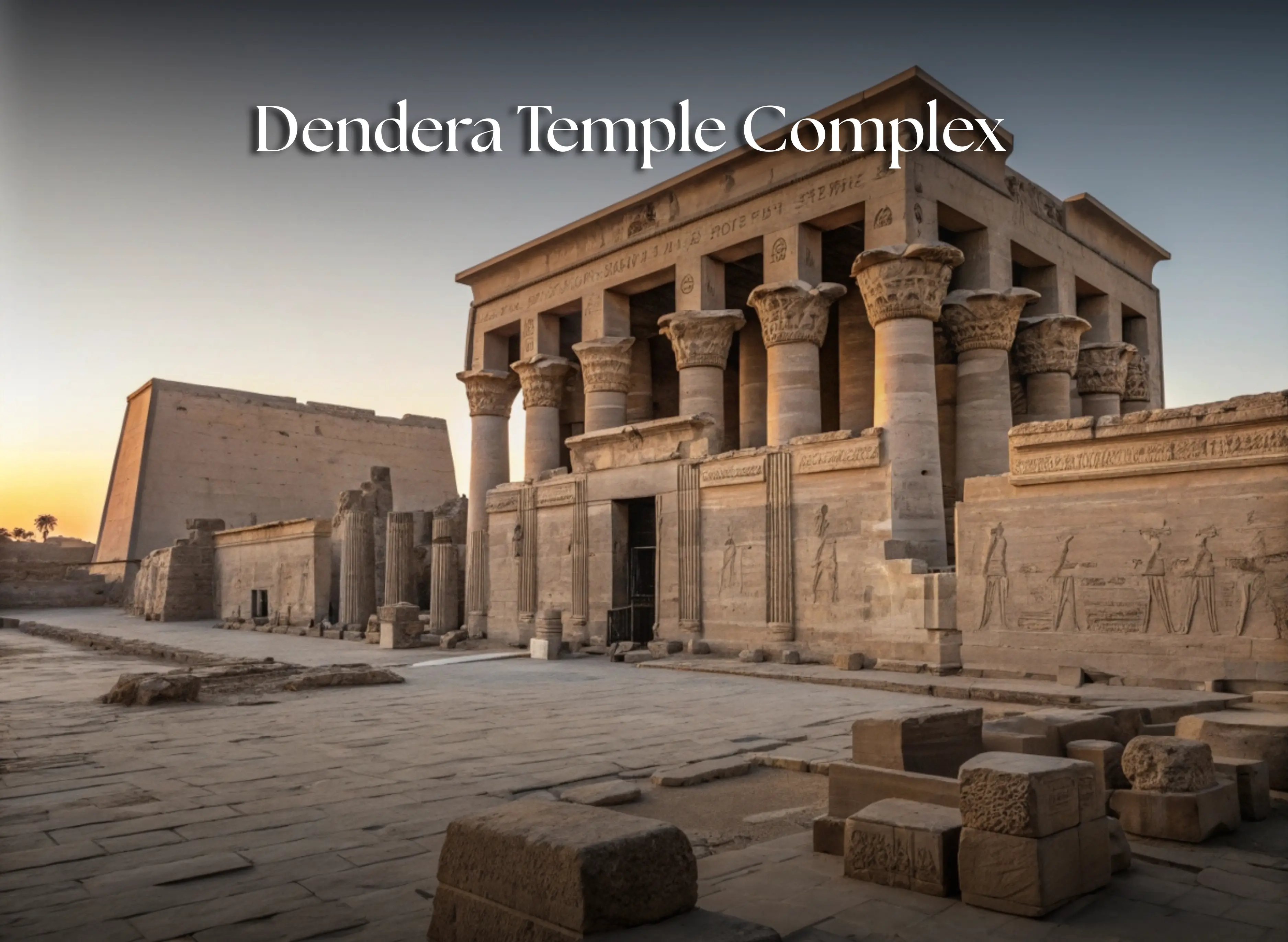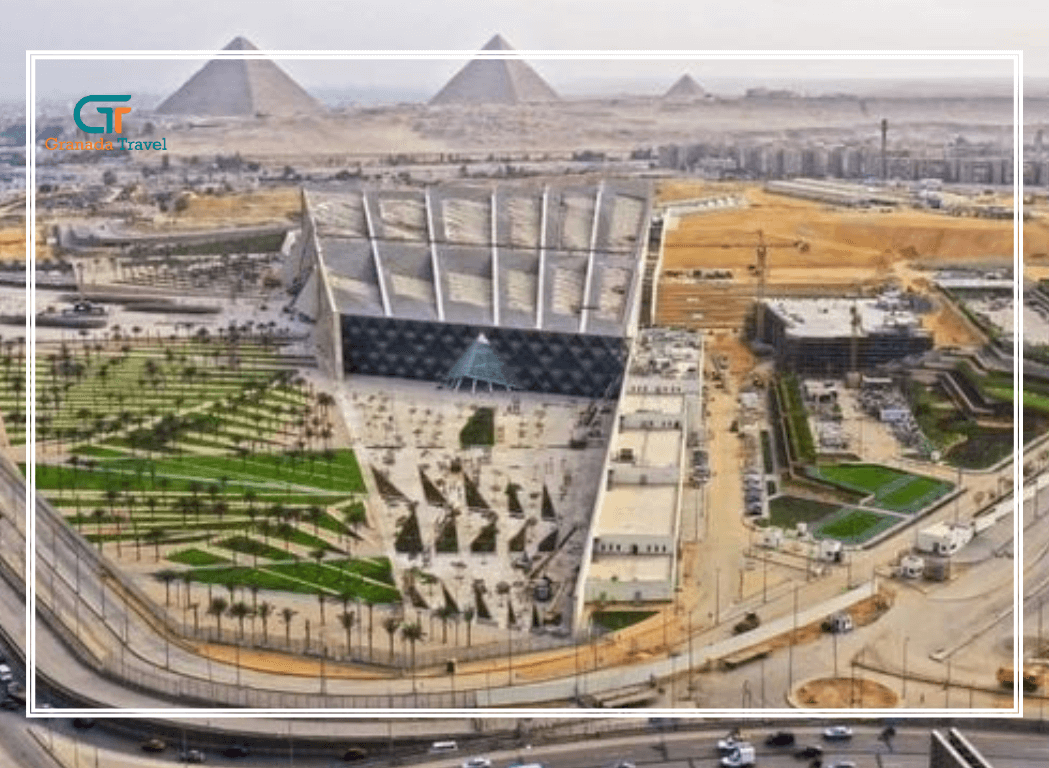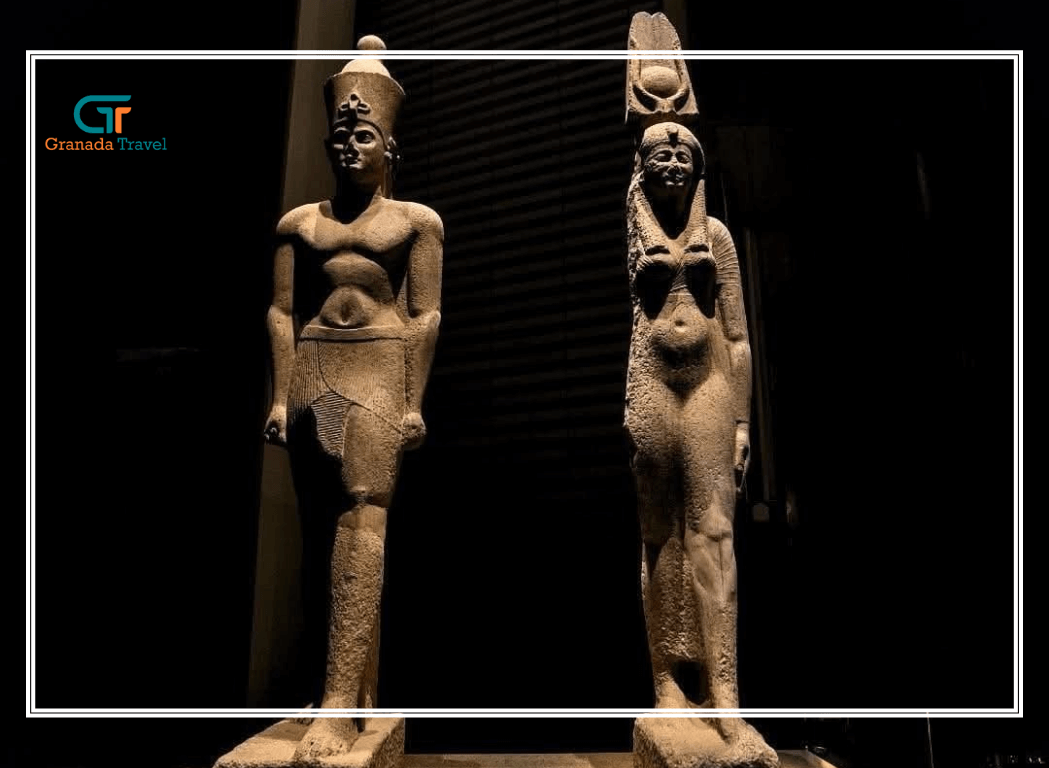
Exploring the Dendera Temple Complex: A Journey Through Ancient Egypt’s Sacred History
The Dendera Temple Complex, one of Egypt’s most well-preserved and awe-inspiring archaeological sites, stands as a testament to the grandeur of ancient Egyptian architecture, religion, and artistry. Located near the city of Qena, approximately 60 kilometers north of Luxor, the Dendera Temple in Egypt is a must-visit destination for history enthusiasts, archaeologists, and travelers seeking to immerse themselves in the mysteries of the past. This blog delves into the Dendera Temple Complex, exploring its history, significance, architectural marvels, and why it remains a captivating site for modern visitors. From the iconic Temple of Hathor Egypt to the enigmatic Dendera Zodiac and the controversial Dendera Light, we’ll uncover the stories that make this site so extraordinary.
What is the Dendera Temple Complex?
The Dendera Temple Complex is a sprawling ancient Egyptian religious site dedicated primarily to Hathor, the goddess of love, music, and motherhood. While the complex includes several structures, the Temple of Hathor Egypt is the centerpiece, renowned for its intricate carvings, vibrant reliefs, and astronomical ceiling. The Dendera Temple in Egypt is one of the best-preserved temples from the Greco-Roman period, offering a glimpse into the religious and cultural practices of ancient Egypt during a time of significant historical transition.
The Dendera Temple location is on the west bank of the Nile River, making it easily accessible for those exploring the region. Often referred to as the Dendera Temple Luxor due to its proximity to the city, the temple complex is a popular day trip for visitors based in Luxor. Its historical and cultural significance, combined with its stunning preservation, makes the Dendera Temple Complex a highlight of any Egyptian itinerary.
Dendera Temple History: A Timeline of Devotion
The Dendera Temple history is a fascinating journey through millennia of worship and construction. While the current structure dates primarily to the Ptolemaic period (305–30 BCE), archaeological evidence suggests that the site was a place of worship as early as the Old Kingdom (circa 2686–2181 BCE). The Dendera Temple Complex was built and expanded over centuries, with contributions from various rulers, including the Ptolemies and Roman emperors.
When Was Dendera Temple Built?
The question when was Dendera Temple built is complex due to the site’s long history. The existing Temple of Hathor Egypt was largely constructed during the Ptolemaic dynasty, with significant work completed under Ptolemy XII and Cleopatra VII. However, earlier structures on the site date back to the Middle Kingdom (circa 2055–1650 BCE) and New Kingdom (circa 1550–1070 BCE). The Romans later added their own modifications, particularly during the reign of Emperor Tiberius. This layered construction makes the Dendera Temple Complex a unique blend of Egyptian and Greco-Roman architectural styles.
How Old is Dendera Temple Complex?
To answer how old is Dendera Temple Complex, we must consider both the site’s continuous use and the age of its current structures. The complex as a religious site is over 4,000 years old, with evidence of worship dating to the Old Kingdom. The primary temple, however, is approximately 2,000–2,300 years old, reflecting its Ptolemaic and Roman origins. This combination of ancient reverence and relatively recent construction contributes to the site’s exceptional preservation.
Why Was the Temple of Dendera Built?
The question why was the Temple of Dendera built lies at the heart of its significance. The Dendera Temple Complex was primarily constructed to honor Hathor, a beloved goddess associated with joy, fertility, and the afterlife. The temple served as a center for religious ceremonies, festivals, and pilgrimages, where devotees sought Hathor’s blessings. Additionally, the complex was a place of astronomical observation, as evidenced by the famous Dendera Zodiac, a circular relief depicting the constellations.
The temple also had a political purpose. During the Ptolemaic period, the Greek rulers of Egypt sought to legitimize their authority by aligning themselves with traditional Egyptian religion. By constructing and embellishing the Dendera Temple in Egypt, they demonstrated their devotion to Egyptian gods and gained the favor of the local population. The Dendera Temple Complex thus served as both a spiritual and political symbol.
What is the Significance of the Dendera Temple?
The significance of the Dendera Temple extends beyond its religious function. The complex is a treasure trove of ancient Egyptian art, astronomy, and architecture. Its well-preserved reliefs and inscriptions provide invaluable insights into the rituals, mythology, and daily life of the period. The Dendera Zodiac, for example, is one of the earliest known representations of the zodiac, illustrating the advanced astronomical knowledge of the ancient Egyptians.
Another intriguing feature is the so-called Dendera Light, a series of reliefs that some speculate depict an ancient form of electric lighting. While mainstream archaeologists interpret these as symbolic representations of mythological concepts, the Dendera Light has sparked debate and fascination among alternative historians. These elements highlight the Dendera Temple Complex as a site of both historical and speculative intrigue.
[cta-actions]
Exploring the Dendera Temple Complex: Key Features
The Dendera Temple Complex is a marvel of ancient engineering and artistry. Here are some of its most notable features:
1. The Temple of Hathor Egypt
The Temple of Hathor Egypt is the heart of the complex. Its hypostyle hall, adorned with 24 massive columns, features intricate carvings of Hathor and other deities. The ceiling, painted with astronomical scenes, is a highlight, showcasing the ancient Egyptians’ fascination with the cosmos. The temple’s inner sanctuaries, including the crypts, contain detailed reliefs depicting rituals and offerings.
2. The Dendera Zodiac
The Dendera Zodiac is a circular bas-relief originally located in the temple’s ceiling (now housed in the Louvre Museum, with a replica at Dendera). This masterpiece maps the constellations and celestial bodies, reflecting the Egyptians’ sophisticated understanding of astronomy. It is one of the most iconic artifacts from the Dendera Temple in Egypt.
3. The Dendera Light
The Dendera Light refers to a series of carvings in the temple’s crypts that appear to depict a bulb-like object with a snake inside, connected to what some interpret as a cable. While Egyptologists argue this represents a mythological lotus flower and serpent, the image has fueled speculation about ancient technology. Visiting these crypts during a Dendera Temple tour is a must for those intrigued by this mystery.
4. The Sacred Lake and Mammisi
The complex includes a sacred lake used for purification rituals and several mammisi (birth houses) dedicated to the birth of divine children, such as Ihy, the son of Hathor. These structures highlight the temple’s role in celebrating fertility and divine lineage.
5. The Coptic Basilica and Roman Structures
In addition to the main temple, the Dendera Temple Complex contains a Coptic Christian basilica from the 5th century CE and Roman-era additions, showcasing the site’s continuous use across cultures and religions.
Dendera Temple Facts: Quick Insights
Here are some key Dendera Temple facts to enhance your understanding:
- Location: West bank of the Nile, near Qena, 60 km north of Luxor.
- Primary Deity: Hathor, goddess of love, music, and motherhood.
- Construction Period: Primarily Ptolemaic (305–30 BCE), with earlier and later additions.
- Key Features: Temple of Hathor, Dendera Zodiac, Dendera Light, sacred lake.
- Preservation: One of Egypt’s best-preserved temples, with vibrant colors and intact reliefs.
- Cultural Significance: A center for religious, astronomical, and political activities.
Explore it up close with our Dendera and Abydos Tour - history brought to life.
Where is Dendera Temple?
For those wondering where is Dendera Temple, the Dendera Temple location is in Upper Egypt, near the town of Dendera in Qena Governorate. It lies on the west bank of the Nile River, approximately 5 km from the river’s edge. The temple’s proximity to Luxor makes it a convenient stop for visitors exploring Egypt’s ancient sites. Most travelers visit as part of a Dendera Temple tour, often combined with a visit to the nearby Abydos Temple.
Is Dendera Temple Worth It?
The question is Dendera Temple worth it is one many travelers ask when planning their Egyptian adventure. The answer is a resounding yes. The Dendera Temple Complex offers a unique combination of historical significance, architectural beauty, and cultural intrigue. Its well-preserved state allows visitors to experience ancient Egypt in a way few other sites can match. Whether you’re captivated by the Temple of Hathor Egypt, fascinated by the Dendera Zodiac, or curious about the Camera Light, a visit to Dendera is an unforgettable journey into the past.
Why Visit Dendera Temple Complex?
- Architectural Splendor: The temple’s vibrant reliefs and grand columns are breathtaking.
- Historical Insights: The site offers a window into Ptolemaic and Roman Egypt.
- Astronomical Marvels: The Dendera Zodiac showcases ancient astronomical knowledge.
- Mystical Allure: The Dendera Light and crypts add an element of mystery.
- Accessibility: Its proximity to Luxor makes it an easy addition to any itinerary.
Planning Your Dendera Temple Tour
The Granada Travel’s Dendera Temple tour is the best way to explore the Dendera Temple Complex. Most tours depart from Luxor and include transportation, a knowledgeable guide, and entrance fees. A typical visit lasts 3–4 hours, allowing ample time to explore the Temple of Hathor Egypt, the Dendera Zodiac replica, and the Dendera Light carvings. For a more immersive experience, consider a combined tour with Abydos, another significant ancient site.
Tips for Visiting Dendera Temple
- Best Time to Visit: October to April, when temperatures are cooler.
- What to Bring: Comfortable shoes, sunscreen, water, and a hat for sun protection.
- Photography: Non-flash photography is allowed, but special permits are required for professional equipment.
- Guides: Hiring a guide enhances your understanding of the temple’s history and symbolism.
- Accessibility: The temple is relatively flat, but some areas, like the crypts, may have narrow or steep access.
The Legacy of the Dendera Temple Complex
The Dendera Temple Complex is more than just an ancient monument; it is a living testament to the ingenuity, spirituality, and artistry of ancient Egypt. From its dedication to Hathor to its astronomical and mythological significance, the temple continues to captivate scholars, tourists, and dreamers alike. Whether you’re drawn to the Temple of Hathor Egypt, intrigued by the Dendera Zodiac, or curious about the Dendera Light, a visit to the Dendera Temple in Egypt promises an unforgettable experience.
As you plan your journey to this remarkable site, consider the Dendera Temple Complex not just as a destination but as a portal to a world where gods and mortals intertwined, where the stars guided human destiny, and where the past continues to speak to the present. Make time for a Dendera Temple tour and discover why this ancient marvel remains one of Egypt’s most cherished treasures.
[cta-actions]





